Artist Media Series
Living Artists
Historic
$ 15.00
American Indian Art Magazine was one of the premier Native Art Magazines for over 40 years. Many of the issues have become classics for their insightful articles on everything from pottery to beadwork. The magazine closed a few years ago and I bought out the remaining issues that were focused on the pottery so each one we are listing is now fully sold out! All issues are in perfect condition.
This is Vol. 31, #1 and it is a special issue for me! It was the first article I wrote for the magazine. It was their 30th Anniversary issue and I worked with Virgil Ortiz to create tiles for the cover. My article was entitled “From Folk Art to Fine Art” and I think it has held up well over time with some of the thinking which evolved 10 years later into “Spoken Through Clay”. In the article, there are brief vignettes I wrote on Susan Folwell, Diego Romero, Christine McHorse, Roxanne Swentzell, Virgil Ortiz, Russell Sanchez, Dorothy Torivio, Steve Lucas, LuAnn Tafoya, Grace Medicine Flower, Nathan Youngblood, Nancy Youngblood, Joseph Lonewolf, Dextra Quotskuyva, and Tammy Garcia.
There are two other great articles in this magazine. One is about the Maria Martinez/Popovi Da/Tony Da collection at the Millicent Rogers Museum in Taos, NM. The other is about Arroh-A-Och from Zuni. Both articles still seem relevant and important 15 years later!
The magazine can be signed on my article if you wish. Just let me know! They are new and in excellent condition. Shipping is included.
Out of stock
American Indian Art Magazine was one of the premier Native Art Magazines for over 40 years. Many of the issues have become classics for their insightful articles on everything from pottery to beadwork. The magazine closed a few years ago and I bought out the remaining issues that were focused on the pottery so each one we are listing is now fully sold out! All issues are in perfect condition.
This is Vol. 31, #1 and it is a special issue for me! It was the first article I wrote for the magazine. It was their 30th Anniversary issue and I worked with Virgil Ortiz to create tiles for the cover. My article was entitled “From Folk Art to Fine Art” and I think it has held up well over time with some of the thinking which evolved 10 years later into “Spoken Through Clay”. In the article, there are brief vignettes I wrote on Susan Folwell, Diego Romero, Christine McHorse, Roxanne Swentzell, Virgil Ortiz, Russell Sanchez, Dorothy Torivio, Steve Lucas, LuAnn Tafoya, Grace Medicine Flower, Nathan Youngblood, Nancy Youngblood, Joseph Lonewolf, Dextra Quotskuyva, and Tammy Garcia.
There are two other great articles in this magazine. One is about the Maria Martinez/Popovi Da/Tony Da collection at the Millicent Rogers Museum in Taos, NM. The other is about Arroh-A-Och from Zuni. Both articles still seem relevant and important 15 years later!
The magazine can be signed on my article if you wish. Just let me know! They are new and in excellent condition. Shipping is included.
Artist Media Series
Living Artists
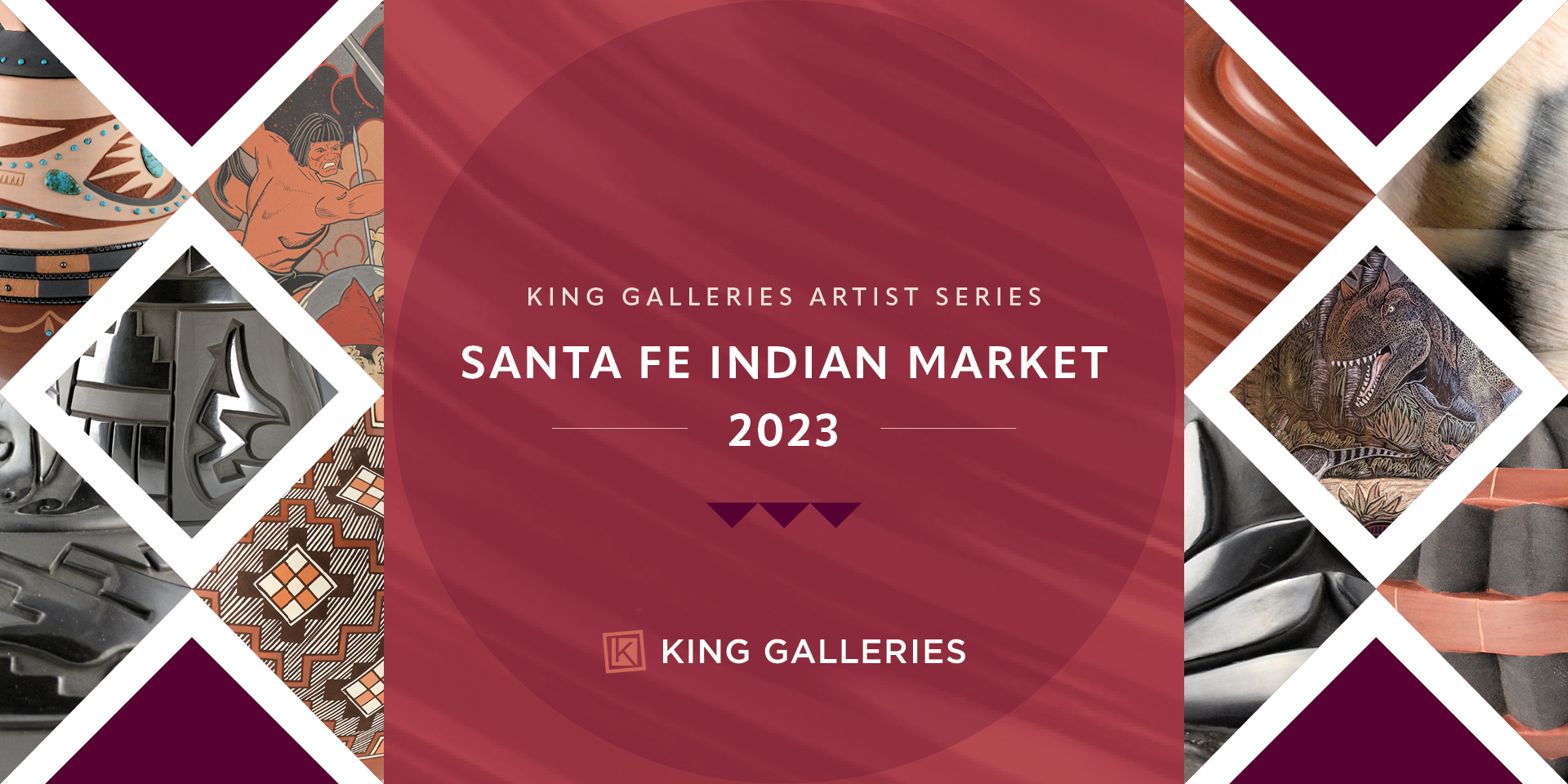
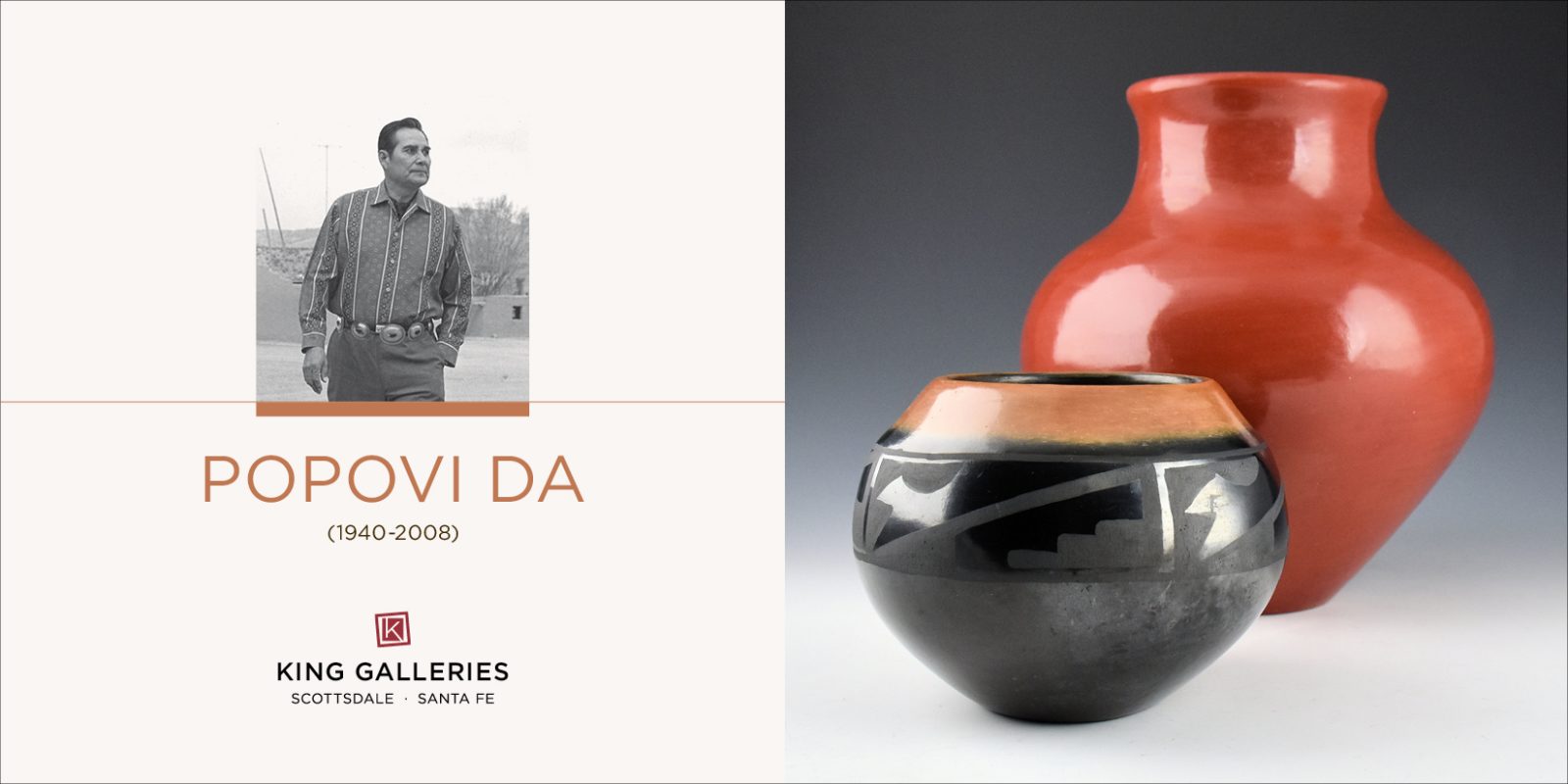
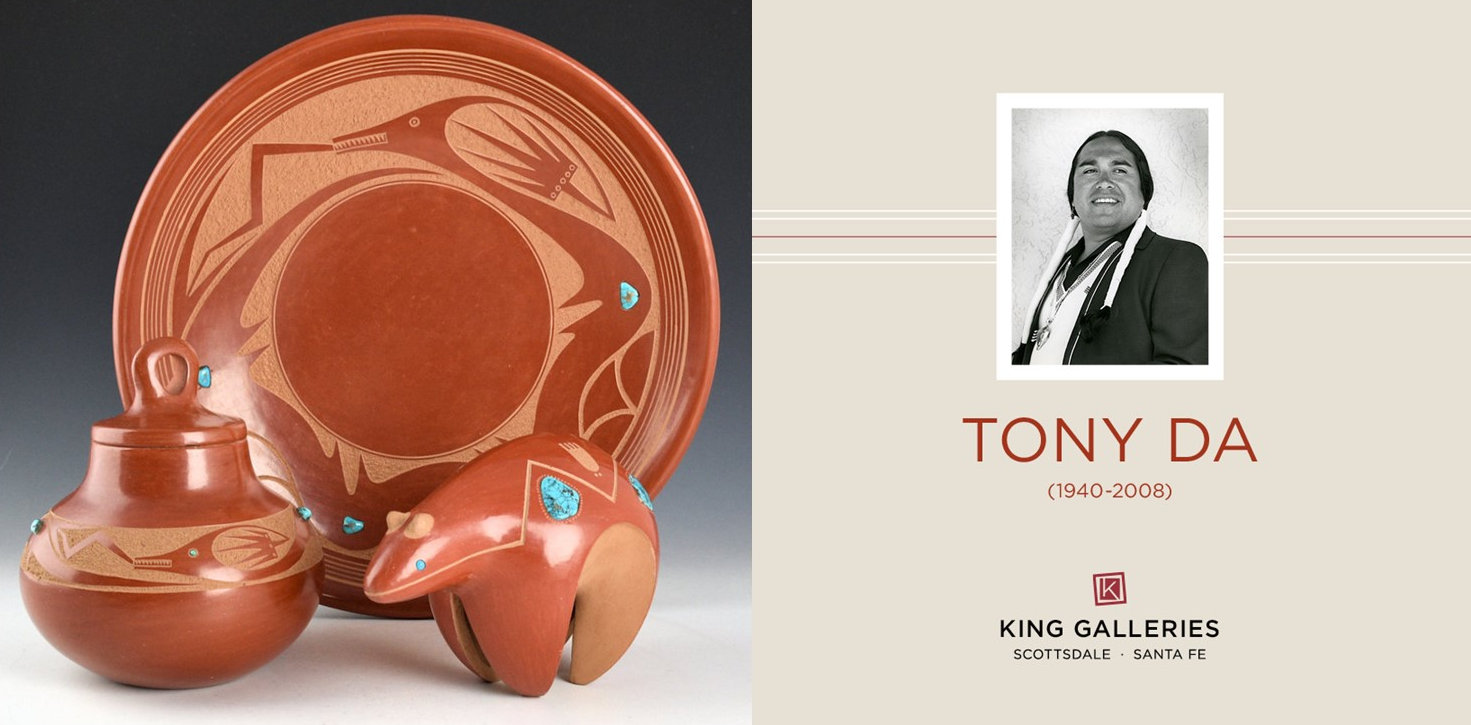
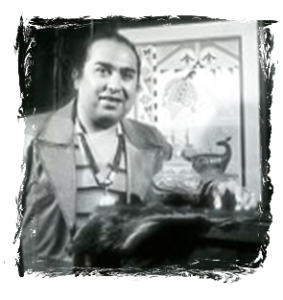
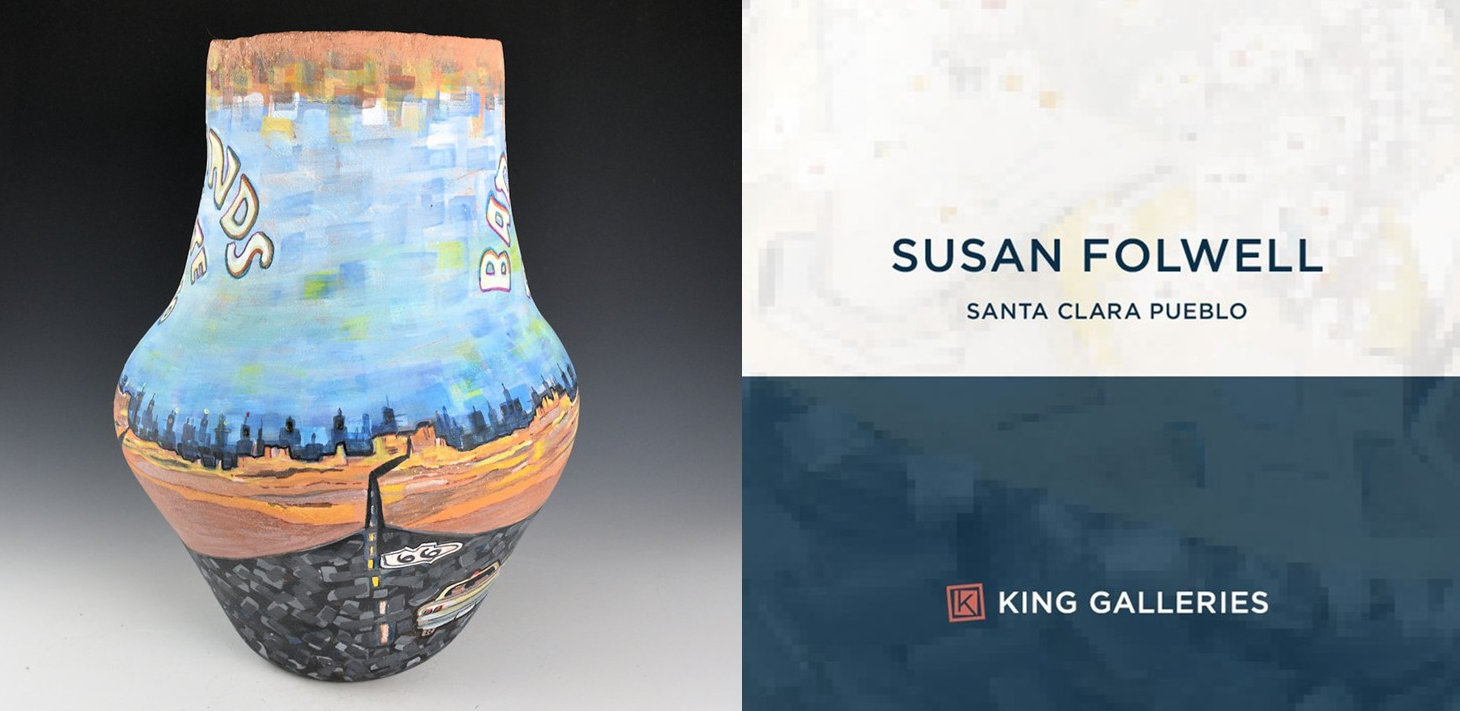

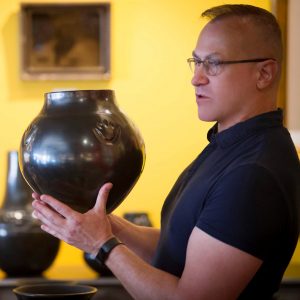 Charles S. King. Photo by Evan Sanders[/caption]
Since its inception, King Galleries has been committed to represent work by potters who create the highest quality and greatest innovation in their pottery. Charles King has been a judge in various years since 1996 for pottery at the most prestigious Indian art events, such as Santa Fe Indian Market, the Heard Museum Indian Market and Gallup Ceremonials. He has also given numerous talks on Pueblo pottery at the Heard Museum, Museum of Indian Art and Culture (MIAC), the Pueblo Grande Museum, Rockwell Museum of Western Art, The Philbrook Museum and The Denver Art Museum.
Charles served on the Board of Directors of the Indian Arts and Crafts Association (IACA), which has the mission of encouraging and preserving authentic Indian art. He was elected in 2008 to the Board of Directors for SWAIA (Southwest Association for Indian Arts), which is the group which puts on Santa Fe Indian Market.
He first wrote about Pueblo pottery in the book "Collecting Authentic Indian Art" and this was followed by the article, "Pueblo Pottery: Folk Art to Fine Art" for the thirtieth anniversary of American Indian Art Magazine. His first book, Born of Fire: The Life and Pottery of Margaret Tafoya, was published in 2008. His articles, "Santa Clara and San Ildefonso Pottery: Black is Beautiful"-2009, and "Four Emerging Potters: Gen Next"-2010 were published in Native Peoples Magazine. His second book, "The Art and Life of Tony Da" was written with Richard Spivey and published in 2012.
Charles S. King. Photo by Evan Sanders[/caption]
Since its inception, King Galleries has been committed to represent work by potters who create the highest quality and greatest innovation in their pottery. Charles King has been a judge in various years since 1996 for pottery at the most prestigious Indian art events, such as Santa Fe Indian Market, the Heard Museum Indian Market and Gallup Ceremonials. He has also given numerous talks on Pueblo pottery at the Heard Museum, Museum of Indian Art and Culture (MIAC), the Pueblo Grande Museum, Rockwell Museum of Western Art, The Philbrook Museum and The Denver Art Museum.
Charles served on the Board of Directors of the Indian Arts and Crafts Association (IACA), which has the mission of encouraging and preserving authentic Indian art. He was elected in 2008 to the Board of Directors for SWAIA (Southwest Association for Indian Arts), which is the group which puts on Santa Fe Indian Market.
He first wrote about Pueblo pottery in the book "Collecting Authentic Indian Art" and this was followed by the article, "Pueblo Pottery: Folk Art to Fine Art" for the thirtieth anniversary of American Indian Art Magazine. His first book, Born of Fire: The Life and Pottery of Margaret Tafoya, was published in 2008. His articles, "Santa Clara and San Ildefonso Pottery: Black is Beautiful"-2009, and "Four Emerging Potters: Gen Next"-2010 were published in Native Peoples Magazine. His second book, "The Art and Life of Tony Da" was written with Richard Spivey and published in 2012. 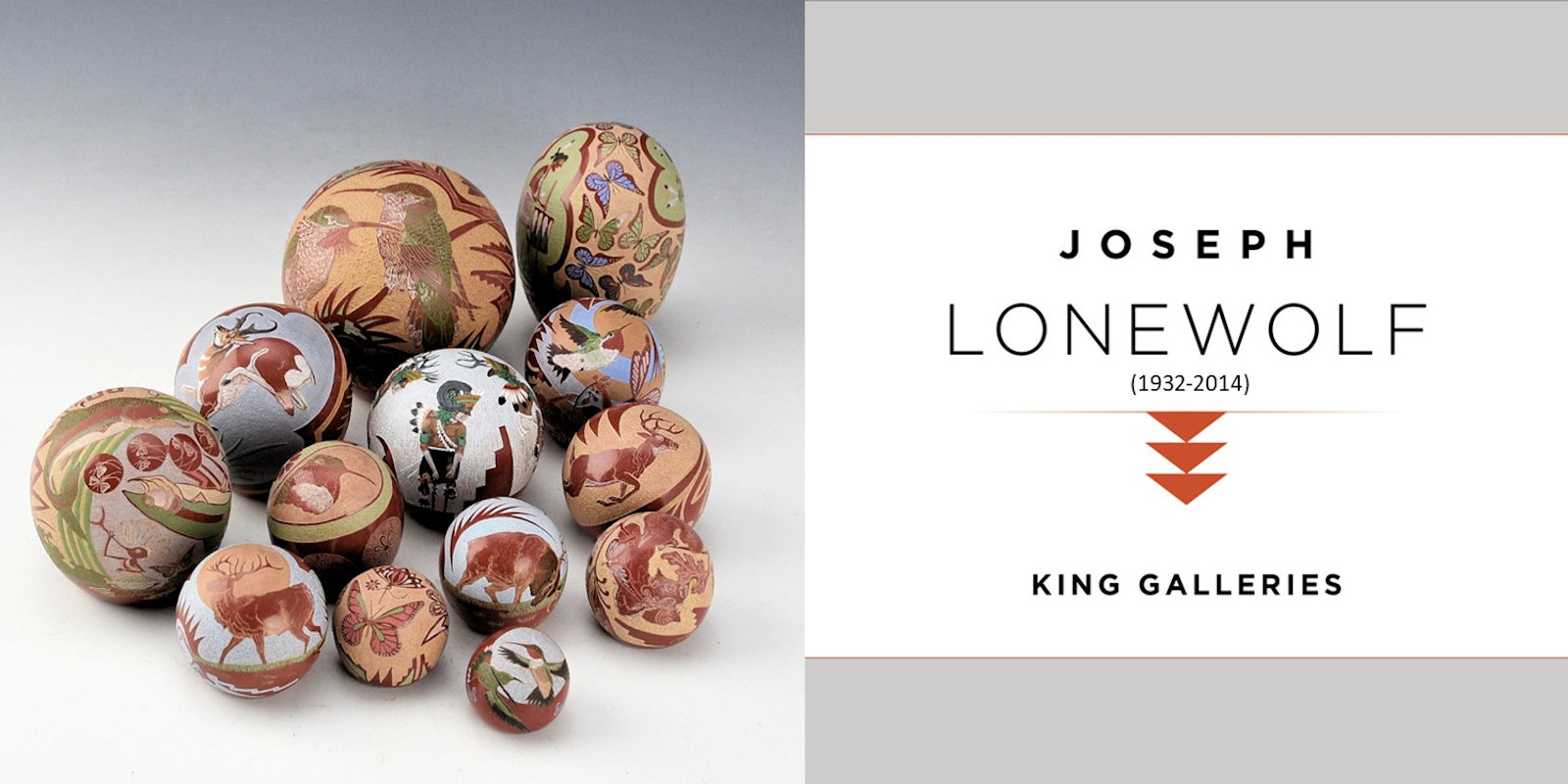
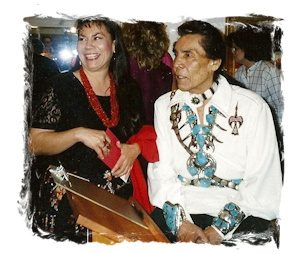 Joseph Lonewolf was a son of noted potters Camilio and Agapita Tafoya and the brother of Grace Medicine Flower. In the early 1970s, Joseph revolutionized the world of Santa Clara pottery by incorporating his sgraffito (lightly etching the surface of the clay) and incised (more deeply cut into the clay) designs in his work.
When Joseph and his family gather clay, they do it with the utmost respect. Before the clay can be taken from Mother Earth, they must say a prayer, asking to take the clay and tell the clay mother that they will take her and make her into a beautiful pot. The clay is brought home, and water is added to turn the clay into a liquid form known as slip. The slip is then strained to take out any rocks or debris, and then the clay can be dried, kneaded, and used.
Joseph was awarded numerous awards throughout his career, and his work can be found in museums worldwide. He has been featured in multiple books, including "The Art of Clay." He received the prestigious New Mexico Governor's Award for Excellence in the Arts in 2009 and the SWAIA Lifetime Achievement Award.
Joseph Lonewolf was a son of noted potters Camilio and Agapita Tafoya and the brother of Grace Medicine Flower. In the early 1970s, Joseph revolutionized the world of Santa Clara pottery by incorporating his sgraffito (lightly etching the surface of the clay) and incised (more deeply cut into the clay) designs in his work.
When Joseph and his family gather clay, they do it with the utmost respect. Before the clay can be taken from Mother Earth, they must say a prayer, asking to take the clay and tell the clay mother that they will take her and make her into a beautiful pot. The clay is brought home, and water is added to turn the clay into a liquid form known as slip. The slip is then strained to take out any rocks or debris, and then the clay can be dried, kneaded, and used.
Joseph was awarded numerous awards throughout his career, and his work can be found in museums worldwide. He has been featured in multiple books, including "The Art of Clay." He received the prestigious New Mexico Governor's Award for Excellence in the Arts in 2009 and the SWAIA Lifetime Achievement Award.
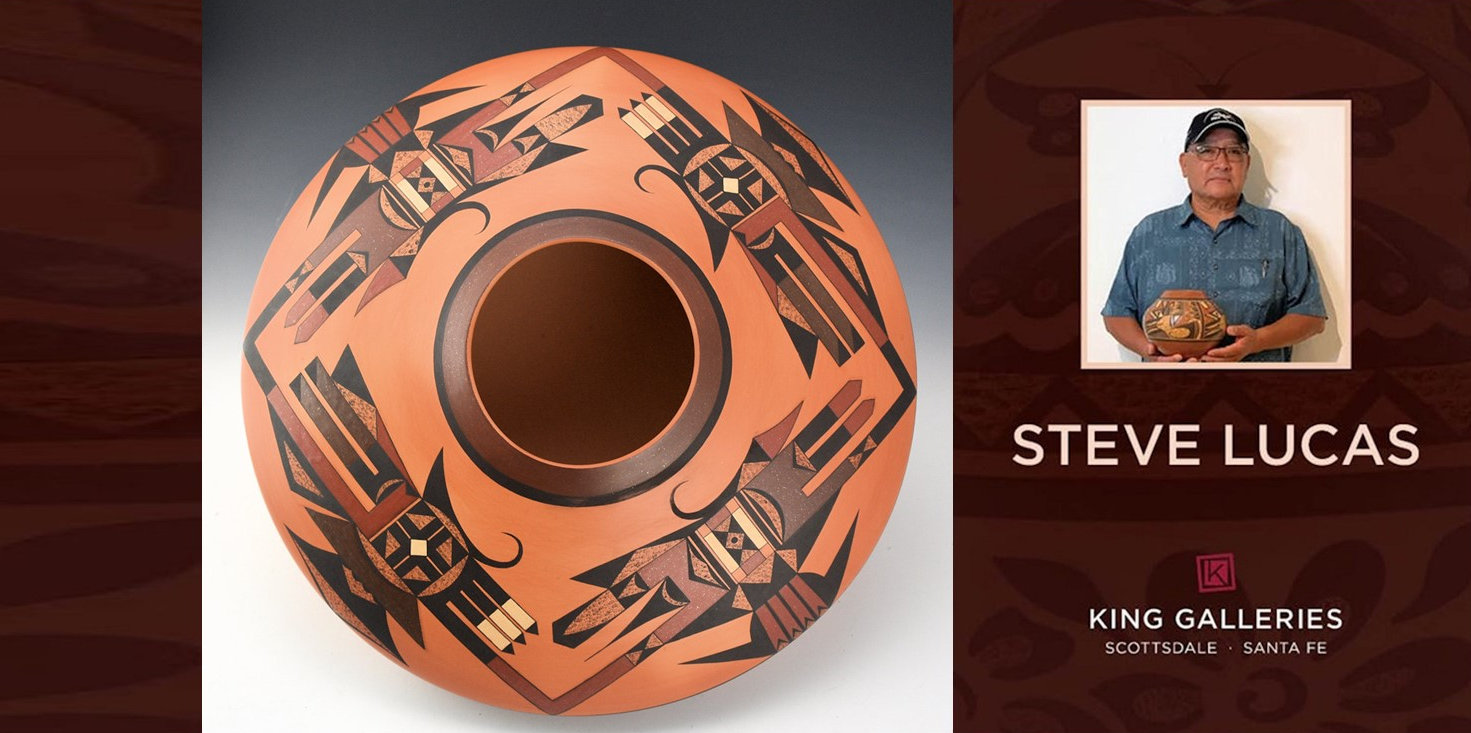
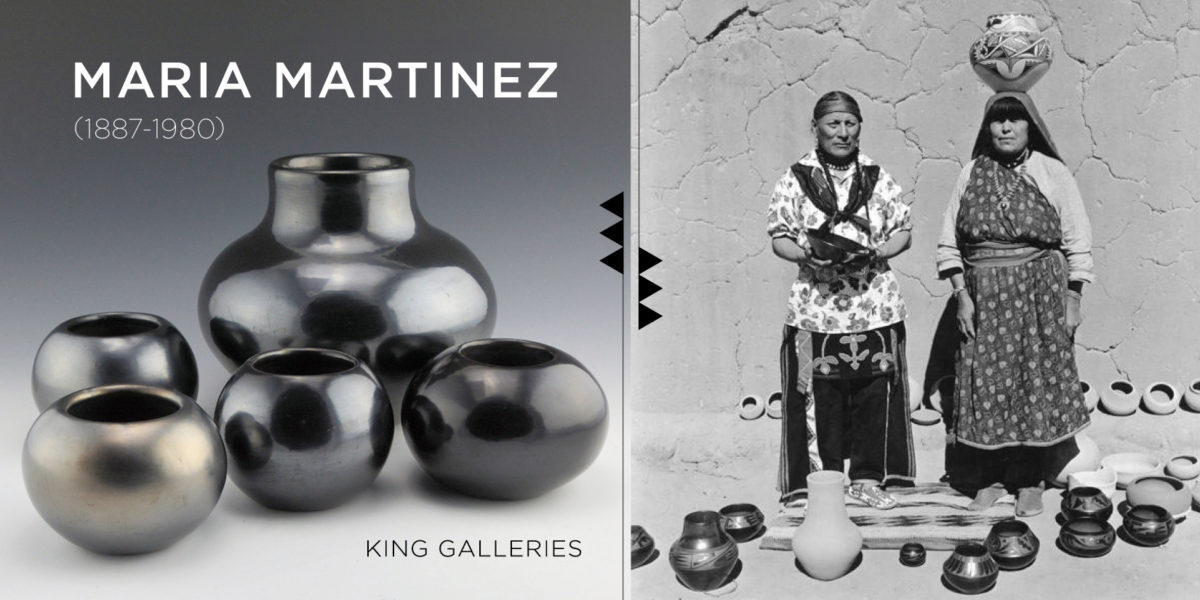 Maria Martinez (1887-1980)
Maria Martinez (1887-1980)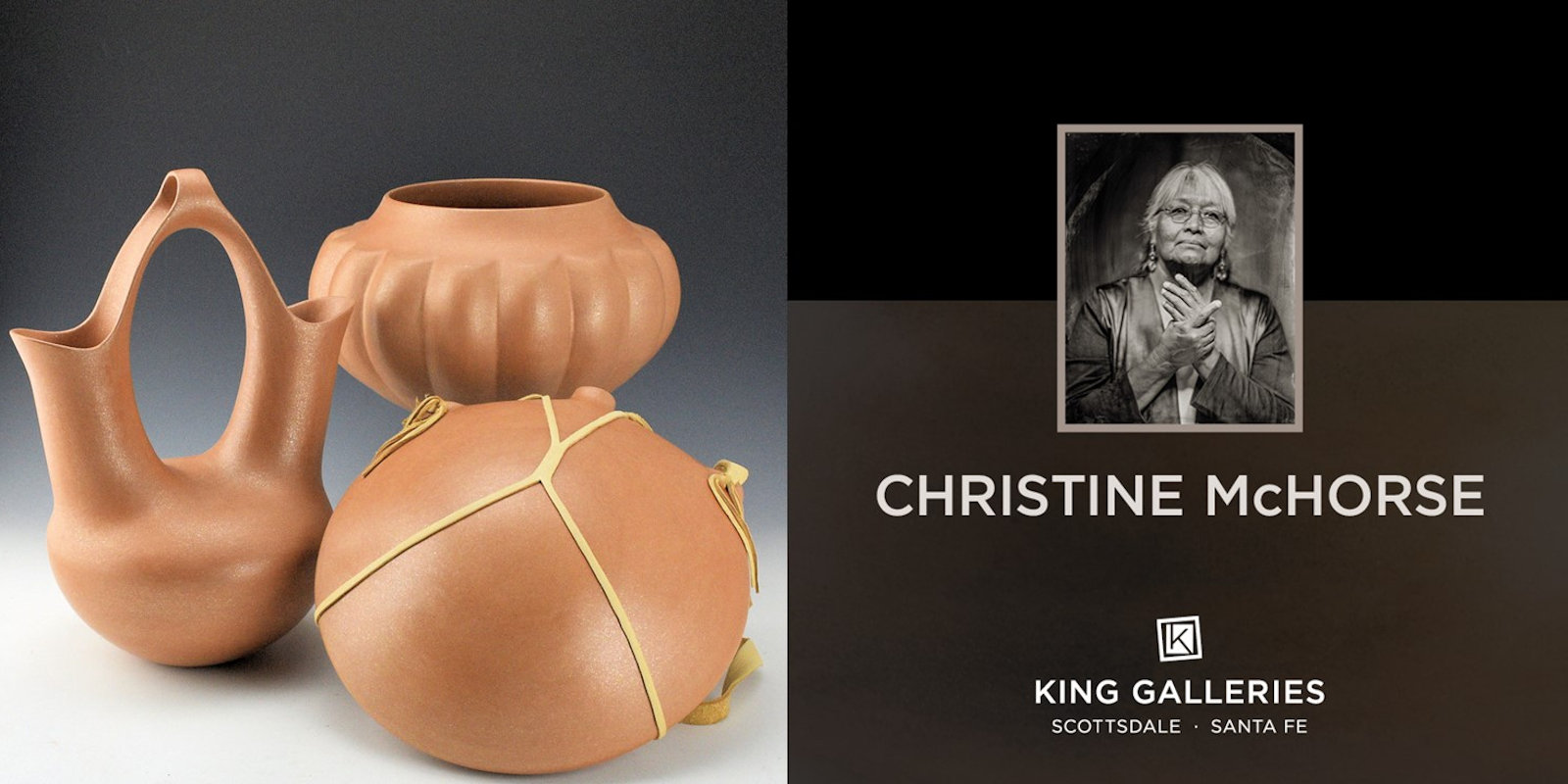 Christine McHorse has taken the traditional micaceous clay and transcended its utilitarian dimension and to create stunning sculptural vessels. Each piece is hand coiled from the micaceous clay near Taos, NM. Her work has a wonderful native aesthetic and vision yet a modern use of the clay to defy expectations. Christine is one of the only potters to win Best of Class at Santa Fe Indian Market for her clay work in both the pottery and sculpture categories. While Christine is Navajo, she learned to make pottery from her mother-in-law, Lena Archuleta (Taos). Her son Joel McHorse also learned to make pottery from Christine. She has received numerous awards at events such as Santa Fe Indian Market. Her work can also be found in museums such as the Heard Museum, the Denver Art Museum, the National Museum of the American Indian and others. She has also been featured in numerous book, including “Free Spirit”. It is not often that we get in contemporary pieces of her pottery and they certainly a delight to the eye!
Christine McHorse has taken the traditional micaceous clay and transcended its utilitarian dimension and to create stunning sculptural vessels. Each piece is hand coiled from the micaceous clay near Taos, NM. Her work has a wonderful native aesthetic and vision yet a modern use of the clay to defy expectations. Christine is one of the only potters to win Best of Class at Santa Fe Indian Market for her clay work in both the pottery and sculpture categories. While Christine is Navajo, she learned to make pottery from her mother-in-law, Lena Archuleta (Taos). Her son Joel McHorse also learned to make pottery from Christine. She has received numerous awards at events such as Santa Fe Indian Market. Her work can also be found in museums such as the Heard Museum, the Denver Art Museum, the National Museum of the American Indian and others. She has also been featured in numerous book, including “Free Spirit”. It is not often that we get in contemporary pieces of her pottery and they certainly a delight to the eye! 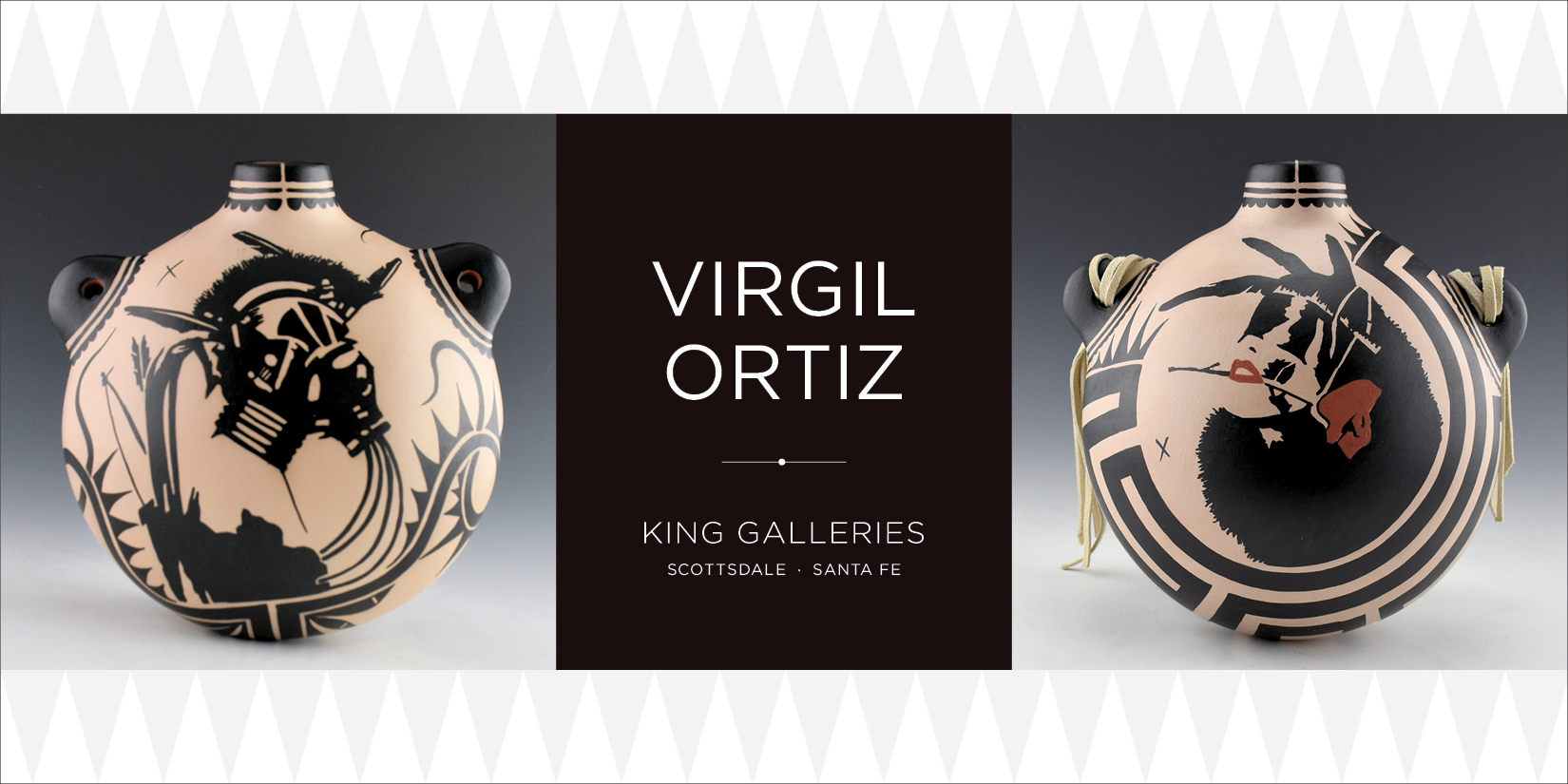 Virgil Ortiz
Virgil Ortiz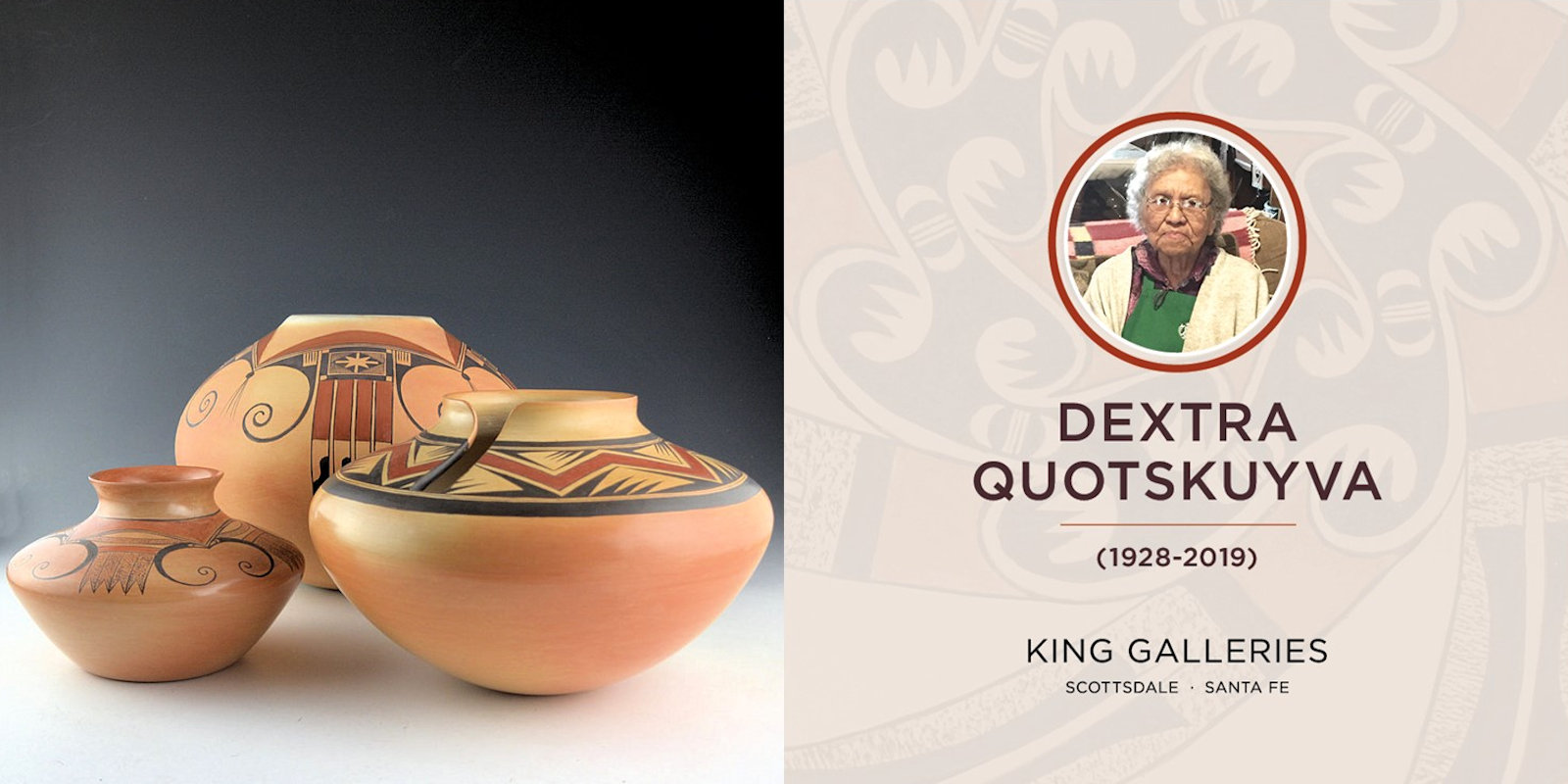
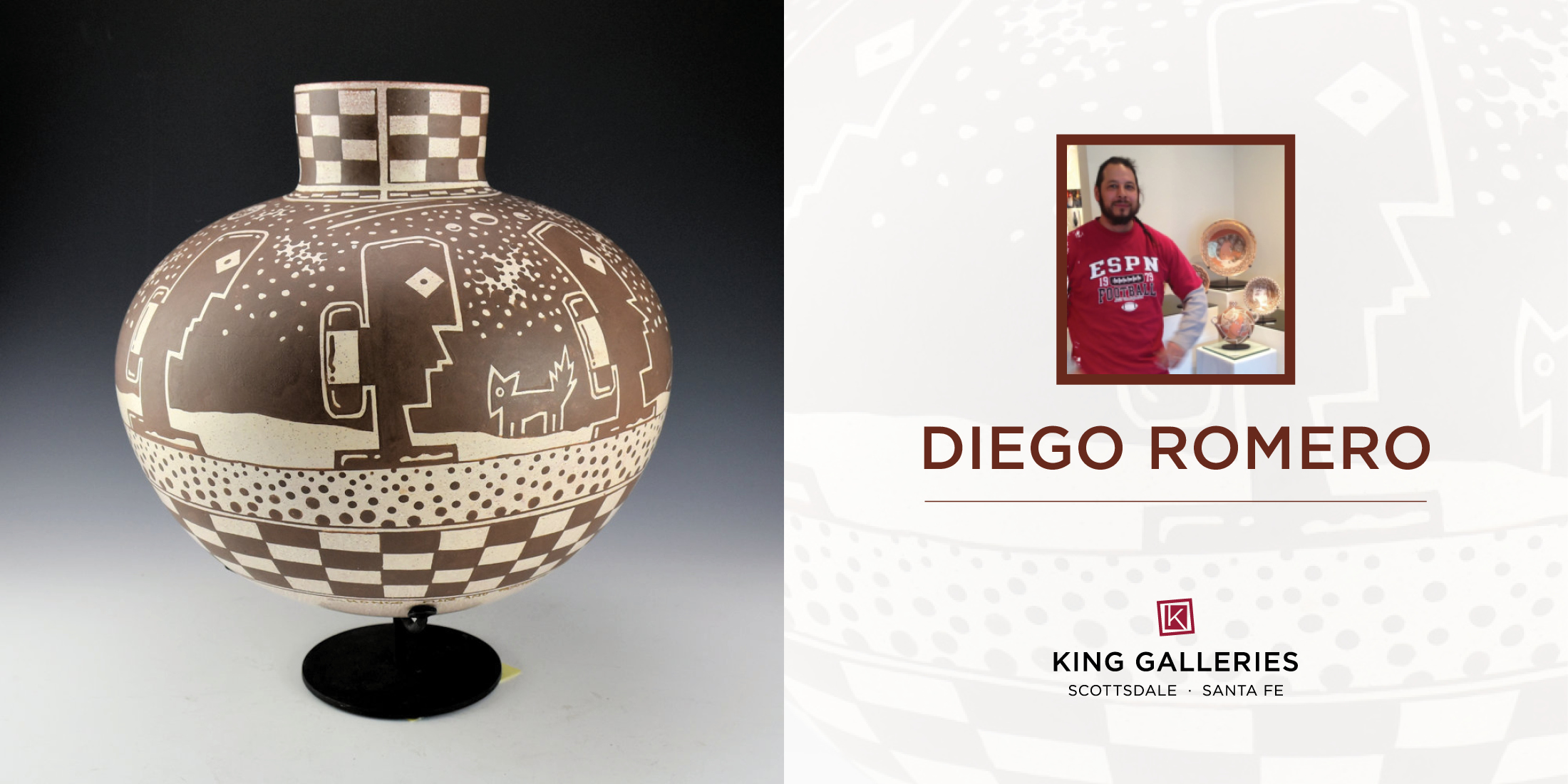
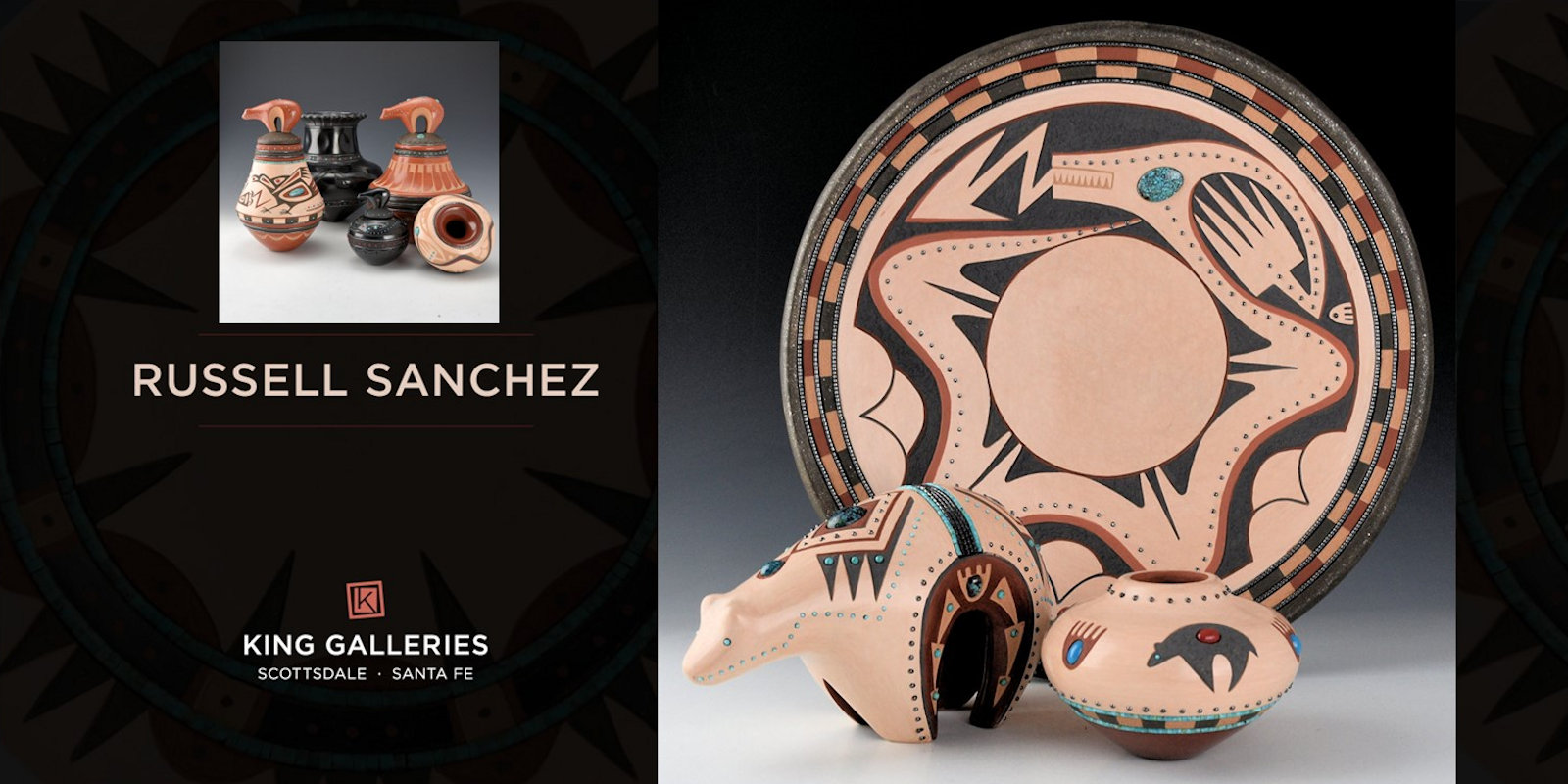

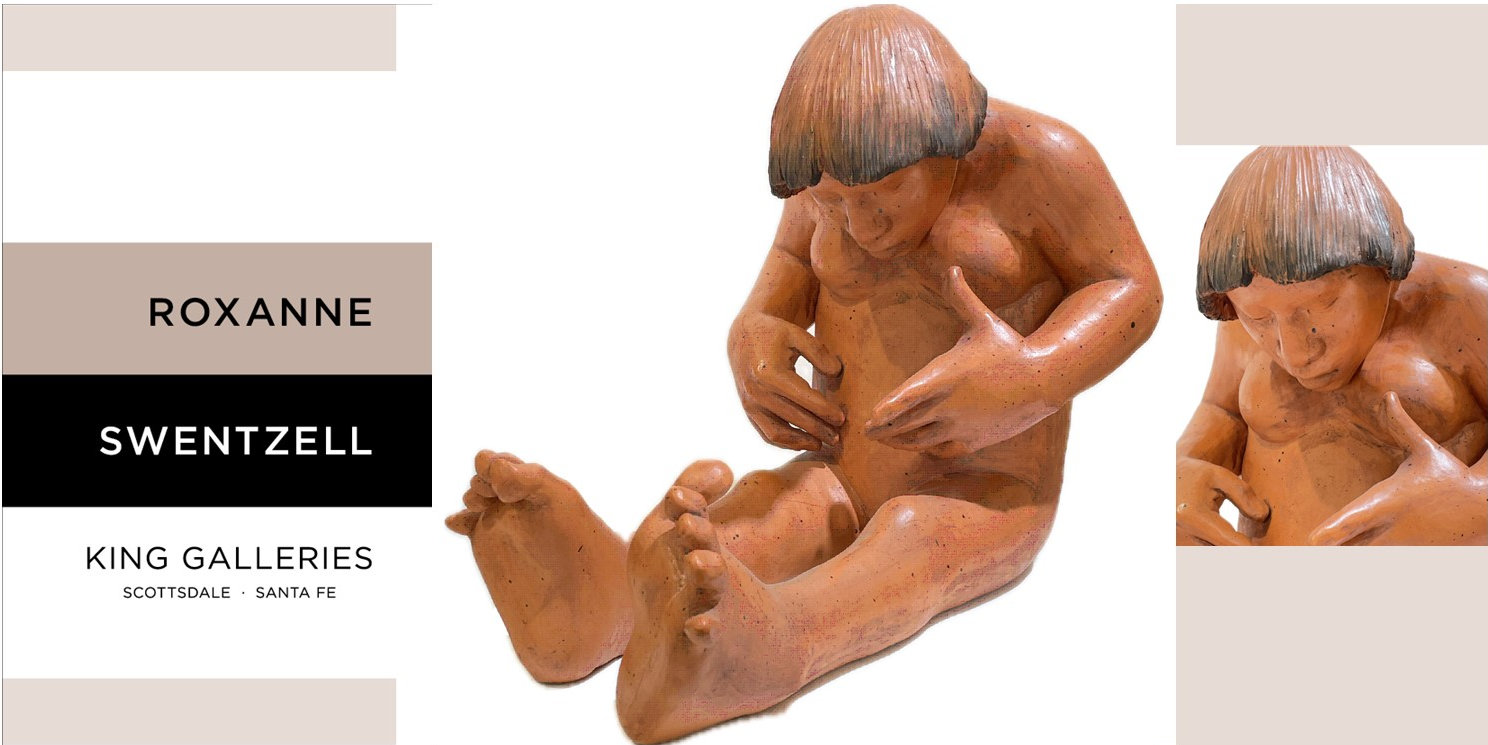
Roxanne Swentzell (b. 1962) continues to be one of the pivotal Pueblo artists, and her work continues to be among the most dynamic and innovative in contemporary figurative pottery. She is a granddaughter of Rose Naranjo, a niece of Nora Naranjo-Morse, Michael Naranjo and Jody Folwel. She is a cousin to Jody Naranjo, Susan Folwell, Forrest Naranjo, and others. She is part of one of the most innovative families at Santa Clara Pueblo. Roxanne has won numerous awards for her work, along with being the subject of several museum exhibitions and books, such as "Women Potters: Transforming Traditions".
Roxanne's first public exhibition was at Santa Fe Indian Market in 1984. In 1994, she won the Santa Fe Indian Market Creative Excellence in Sculpture award. Her sculptures have shown at the White House and currently show in many museums and galleries. A few of her collections include works at the Smithsonian, Cartier in Paris, and Santa Fe Convention Center.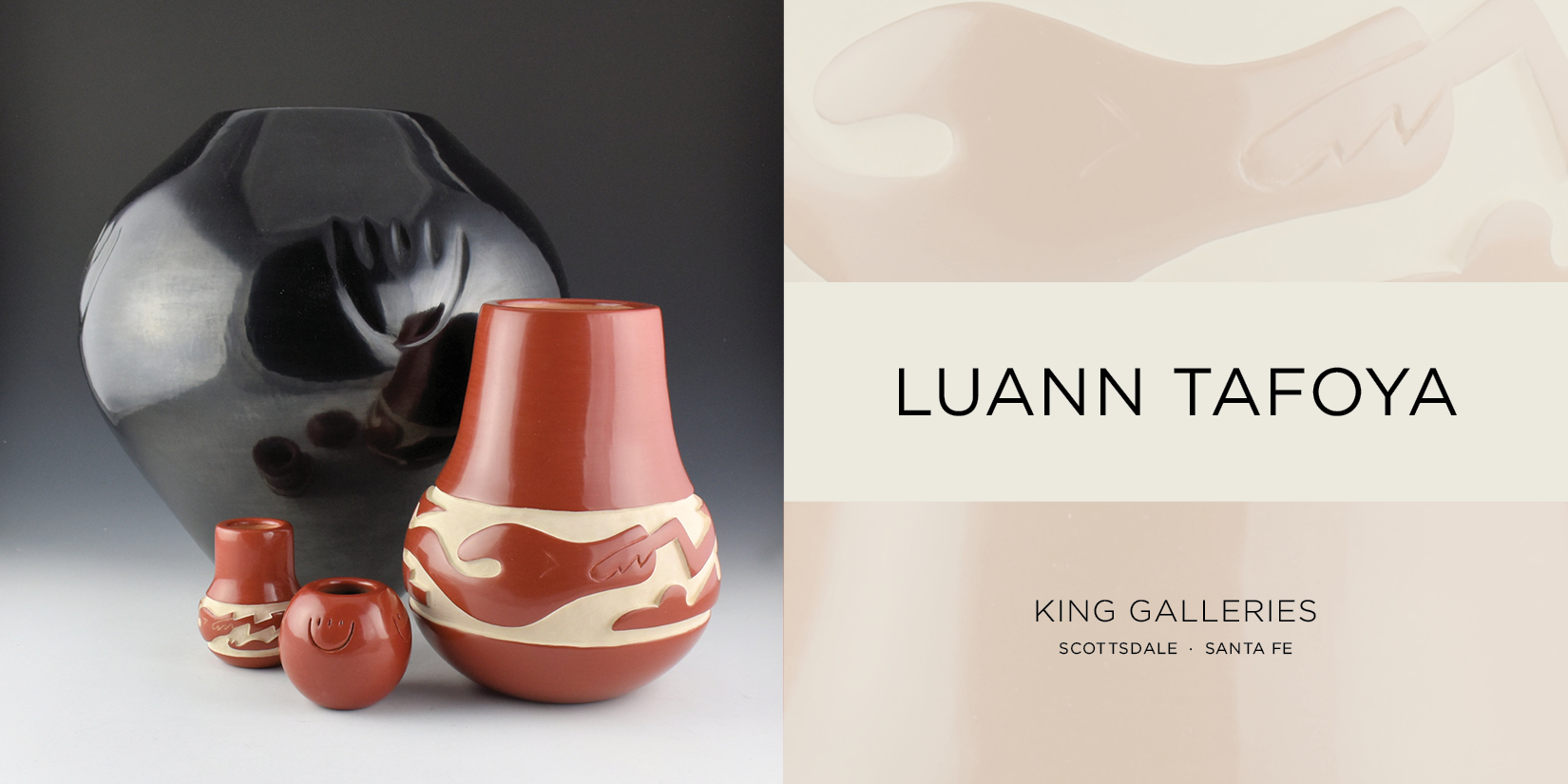
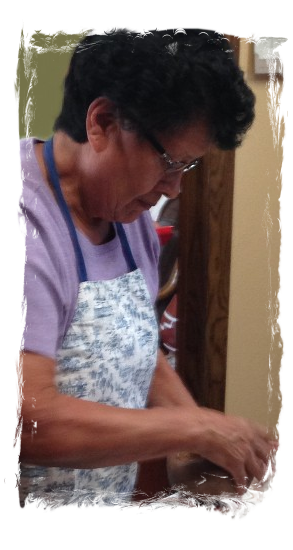
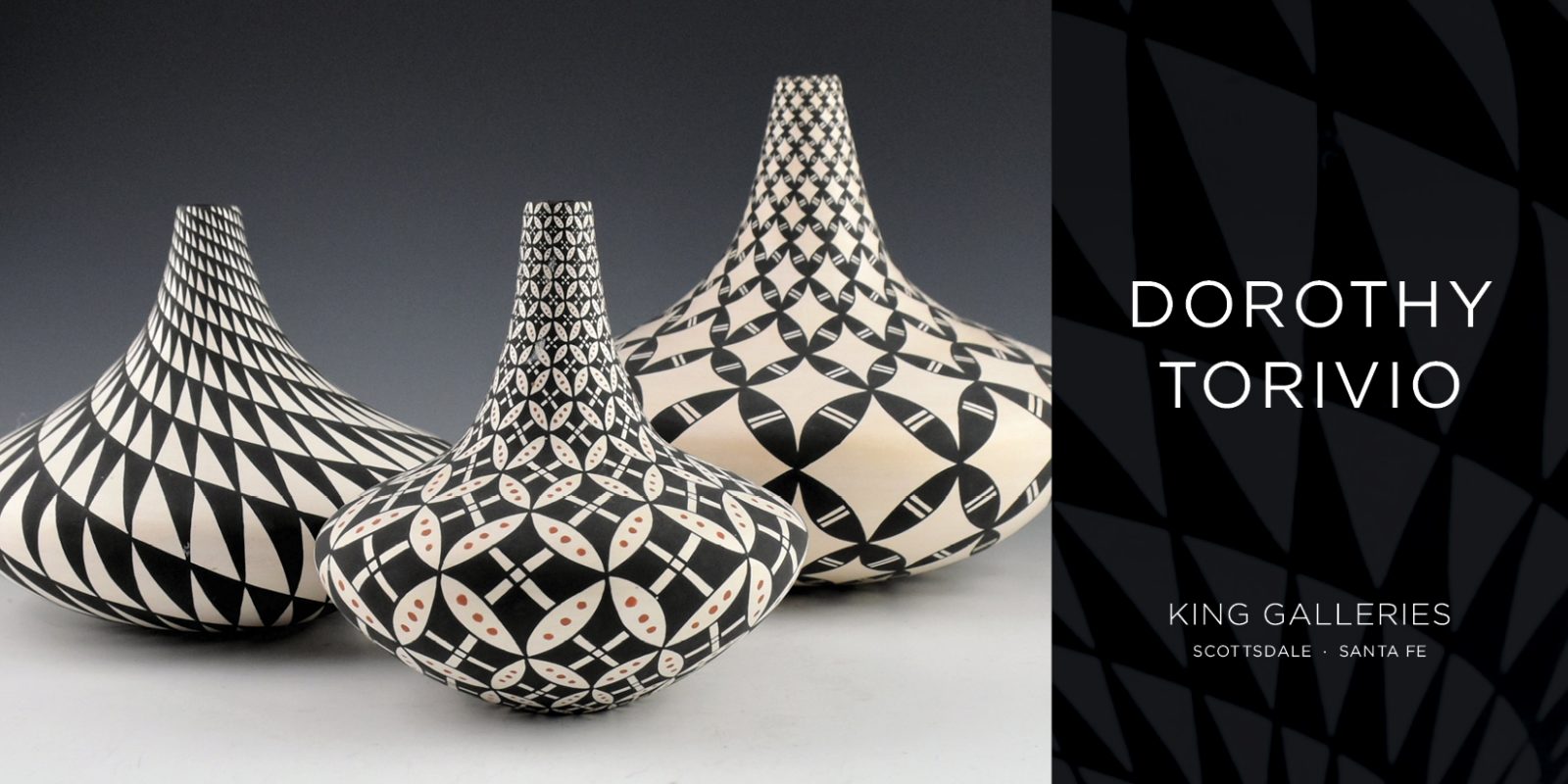
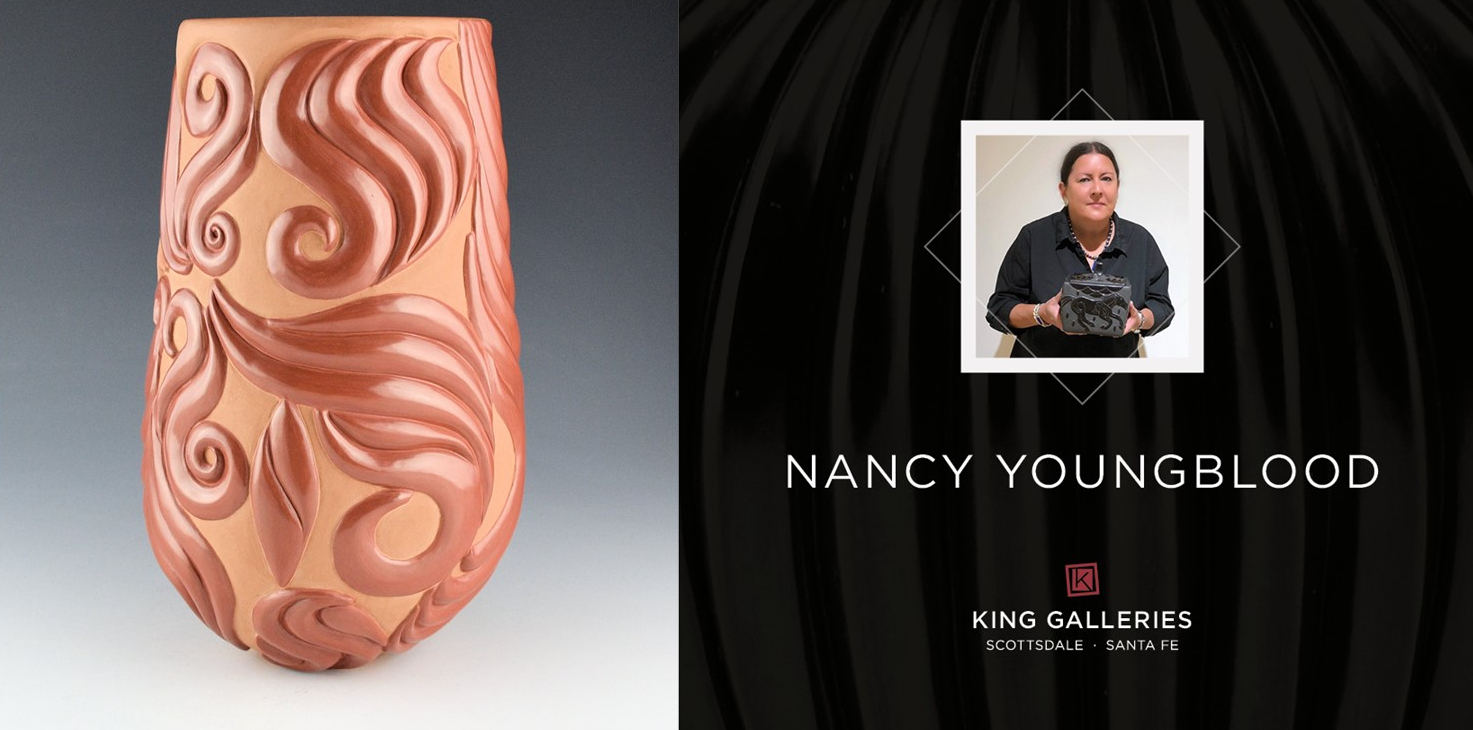

Nathan Youngblood is the grandson of noted potter Margaret Tafoya and the son of Mela Youngblood; Nathan has a traditional legacy of highly polished, deep, carved pottery. In 1976, he moved in with his grandparents and began an intense apprenticeship making pottery under their guidance. Attention to the small details was also imparted to him by his mother and grandmother. His work's precision is particularly evident in his forms, which have near geometric perfection in shape and symmetry. Nathan says, "I realize I don't make pots; I'm just involved in the process. The clay does what it wants and goes where it wants to go. I stick my hands in the clay, and where it goes, I follow."
Nathan Youngblood's clay art has evolved dramatically throughout his career. His early work focused on classic Santa Clara shapes and designs. In the early 1990s, Nathan re-examined his experiences with art worldwide and how it could be incorporated as part of his designs. His love of Asian ceramics influenced how he designed his pottery and utilized matte and polished surfaces to emphasize form. As a result, the designs seemed more complicated, less linear, and more ethereal in concept. As a result, he "opened the door for other potters to use clay as a vehicle for their personal and cultural experiences."
Over the years, Nathan has won over 140 awards for his pottery. He is one of only a handful of Santa Clara potters who use natural clay slips to create color contrasts of red and tan in his pottery. This combination of polished red and tan sections with matte or micaceous surfaces has become the new Santa Clara "polychrome." Throughout his career, he has continually built on the lessons learned from his mother and grandmother. This legacy has created a solid foundation for the evolution of his pottery, and "he has set the bar high for any potter to balance creativity, innovation, and technical expertise.